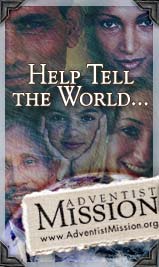How to read Leander Chalice’s translation of the Dead Sea Scrolls.
Koot van wyk (DLitt et Phil; ThD)
Visiting Professor
Department of Liberal Education
Kyungpook National University
Sangju Campus
South Korea
Conjoint lecturer of Avondale College
Australia
25 August 2012
The Korean Publishing House brought out in 2008 the translation of the Dead Sea Scrolls combination brought together from translations and here and there modified for a complete English text.
Leander B. Chalice, The Dead Sea Scrolls of Daniel and Ezra (Seoul: Korean Publishing House, 2008).
How should the Adventist use these alternative readings (at times) to the English Bible?
Answer: They are not alternative readings but degenerative manuscripts that caused variations which resulted from degenerative scribal activities after the time of Antiochus Ephiphanes. It is known that Homer editions experienced the same degenerative scholarship trends at Ptolemaic Alexandria (see M. Fraser 1970) as the Septuagint and also the DSS reveals.
How do we know that there are errors in the DSS?
Go to Chalice 2008: 39. Nebuchadnezzar is spelled as Mechadnezzar. “Appears to be a spelling error of ‘Nebuchadnezzar’”. There is your first “oops”. (See also Chalice 2008: 82 footnote 60.
Are the Dead Sea Scrolls the oldest and therefore should contain a truthful reading our later manuscripts do not have?
Chalice is of the opinion that these DSS manuscripts are the oldest manuscripts therefore they should have the truth that is otherwise not known in later manuscripts.
Answer: As was pointed out by this writer to Chalice, both of us studied at the same University, holds the same degrees there, had the same professors, used the same textbooks, that the oldest manuscript is not necessarily the correct one. Age cannot determine truth. Quantity cannot determine truth. Grammar cannot determine truth. The Masoretic Text from 1008 CE compared to just one fragment of 99% accuracy will give the Masoretic Text as a whole preference. There is such a fragment in the Qumran cave 4.
Although this was pointed out to Chalice in 2008, he nevertheless still kept to the concept that the oldest reading should supply an alternative reading to the Word of God, or our English translations today. That is an oversight on Chalice’s part.
What are the Dead Sea Scrolls then as compared to the Manuscripts of our English Bible?
The Dead Sea Scrolls are manuscripts with many errors as a result of slips of the tongue, eye, ear, hand, and memory. Therefore, we should treat the Dead Sea Scrolls just like the Pseudepigrapha, if they do not match the Masoretic Text reading or our English Bibles today, it is not the Word of God but some paraphrase, liturgical use as hymns or songs, or educational tools with cryptic (shorter notes).
Is Chalice helpful?
Let us give him the benefit of the doubt and say that he can be used, but one should be very careful of his translations, whether he actually used the originals or just translations by scholars of the originals [since experience has demonstrate that the scholars do not always keep to the original and presumptions slip in their translations that are not in the original].
How should we treat Chalice book published by the Korean Publishing House?
Similar to pseudepigrapha and apocrypha which also originated during the same time as these manuscripts.
Not a jota or tittel will be absent from the Word of God. Nothing can replace it.
Alternative textual theory to that of Chalice
Serious students should look at the alternative to Chalice textual theory in Koot van Wyk “Textual Criticism under Scrutiny: Xerox Problems since Epiphanes” Korean Journal of Christian Studies Vol. 75 (2011); 1-19.
















